Kedarnath, situated at an altitude of 3,583 meters in the Garhwal Himalayas of Uttarakhand, stands as one of India’s most revered pilgrimage destinations and a testament to unwavering faith. This ancient temple town, dedicated to Lord Shiva, draws millions of devotees and adventure seekers annually who brave challenging terrains to seek blessings and experience the raw beauty of the Himalayas. The journey to Kedarnath is not merely a physical trek but a spiritual odyssey that transforms every traveler who undertakes it.
The things to do in Kedarnath extend far beyond temple worship, encompassing breathtaking treks, serene meditation spots, and encounters with pristine Himalayan landscapes. From witnessing the morning aarti at the sacred temple to exploring nearby glacial valleys, Kedarnath offers experiences that touch the soul and invigorate the spirit. This comprehensive guide will help you discover the myriad activities and attractions that make Kedarnath an unforgettable destination for pilgrims, trekkers, and nature enthusiasts alike.
About Kedarnath Tour
Kedarnath represents the perfect fusion of spiritual significance and natural grandeur, perched dramatically in the Rudraprayag district of Uttarakhand. The town centers around the ancient Kedarnath Temple, one of the twelve Jyotirlingas and part of the sacred Char Dham pilgrimage circuit. Despite the devastating floods of 2013, Kedarnath has rebuilt itself with improved infrastructure while maintaining its spiritual essence and natural beauty.
The atmosphere in Kedarnath carries a profound sense of devotion mingled with the crisp mountain air and panoramic Himalayan vistas. Accessibility has improved significantly with well-maintained trekking routes, helicopter services, and enhanced facilities at base camps like Gaurikund. The local community, primarily comprising priests, shopkeepers, and hospitality providers, extends warm hospitality to pilgrims despite the harsh climate and challenging living conditions.
Read: How to Reach Kedarnath (Travel Guide 2025) – By Air, Train, Road & Bus
Kedarnath Quick Reference Guide
| Category | Details |
|---|---|
| Location | Rudraprayag District, Uttarakhand, India |
| Known For | Kedarnath Temple, one of 12 Jyotirlingas, Char Dham pilgrimage |
| Ideal Visit Duration | 2 to 4 days including travel and acclimatization |
| Best Time to Visit | May to June and September to October |
The temple remains closed during winter months (November to April) when heavy snowfall makes the region inaccessible and the deity is shifted to Ukhimath. During the operational season, temperatures range from 0 to 18°C, requiring warm clothing even in summer. The trek from Gaurikund to Kedarnath covers approximately 16 kilometers through stunning landscapes featuring waterfalls, snow-capped peaks, and the melodious Mandakini River. For detailed seasonal information and planning tips, explore our comprehensive Best Time to Visit Guides covering various Himalayan destinations.
Top Things to Do in Kedarnath
The best activities in Kedarnath combine spiritual practices with natural exploration, creating a holistic experience for every visitor. Each activity offers unique perspectives on this sacred Himalayan sanctuary.
1. Visit the Sacred Kedarnath Temple
The Kedarnath Temple, built by the Pandavas according to legend and reconstructed by Adi Shankaracharya in the 8th century, stands as the primary reason pilgrims undertake this challenging journey. The temple’s distinctive architecture features massive stone slabs fitted together without mortar, having withstood centuries of harsh weather and natural calamities.
- Attend the morning aarti between 4:00 AM and 7:00 AM for an ethereal spiritual experience with fewer crowds
- Witness the evening aarti around 6:00 PM to 7:30 PM when lamps illuminate the temple creating a mystical atmosphere
- Observe the unique conical temple structure and the massive Nandi statue guarding the entrance
- Experience darshan of the sacred Jyotirlinga, believed to be the hump of Lord Shiva in his bull form
- Visit during weekdays for relatively shorter queues, though expect waiting times of 2 to 4 hours during peak season
2. Trek from Gaurikund to Kedarnath
The 16-kilometer trek from Gaurikund to Kedarnath ranks among the most spiritually significant walking routes in India. This moderately challenging trail gains approximately 1,200 meters in elevation while winding through spectacular Himalayan scenery.
- Start early morning around 5:00 AM to 6:00 AM to avoid afternoon mountain weather and complete the trek in comfortable daylight
- Pace yourself with regular breaks at designated rest points like Rambara (7 km) and Linchauli (11 km)
- Hire ponies or palanquins if needed, costing between ₹1,500 to ₹3,500 depending on season and negotiation
- Carry sufficient water, energy bars, and glucose for sustained energy throughout the climb
- Take time to appreciate the Mandakini River flowing alongside, cascading waterfalls, and rhododendron forests
3. Explore Gandhi Sarovar (Chorabari Tal)
Gandhi Sarovar, located approximately 3 kilometers beyond Kedarnath Temple at an altitude of 3,900 meters, presents a pristine glacial lake of exceptional beauty. The trek to this serene water body offers solitude and spectacular mountain vistas.
- Plan a morning excursion taking 2 to 3 hours for the round trip from Kedarnath
- Witness the crystal-clear turquoise waters reflecting surrounding snow-capped peaks
- Experience the source of the Mandakini River emerging from the Chorabari Glacier
- Carry warm clothing as temperatures drop significantly at this elevation
- Return by early afternoon to avoid unpredictable mountain weather
4. Visit Bhairav Temple
Bhairav Temple, dedicated to Lord Bhairav (the fierce manifestation of Lord Shiva), sits approximately 500 meters uphill from Kedarnath Temple. According to tradition, Kedarnath pilgrimage remains incomplete without visiting this guardian deity temple.
- Trek uphill for about 20 to 30 minutes enjoying panoramic views of the valley
- Witness the unique tradition of offering prayers to Lord Bhairav as the protector of Kedarnath during winter closure
- Capture stunning photographs of Kedarnath Temple and surrounding peaks from this vantage point
- Visit during morning hours for clearer visibility and fewer crowds
5. Attend Morning and Evening Aarti Ceremonies
The ritualistic aartis at Kedarnath Temple create profoundly moving spiritual experiences that resonate with believers and observers alike. These ceremonies follow ancient Vedic traditions maintained by hereditary priests.
- Arrive at least 30 minutes before scheduled timing to secure a good viewing position
- Participate in the synchronized chanting, bell ringing, and lamp offerings
- Experience the powerful energy as hundreds of devotees join in collective worship
- Respect temple protocols including photography restrictions during aarti
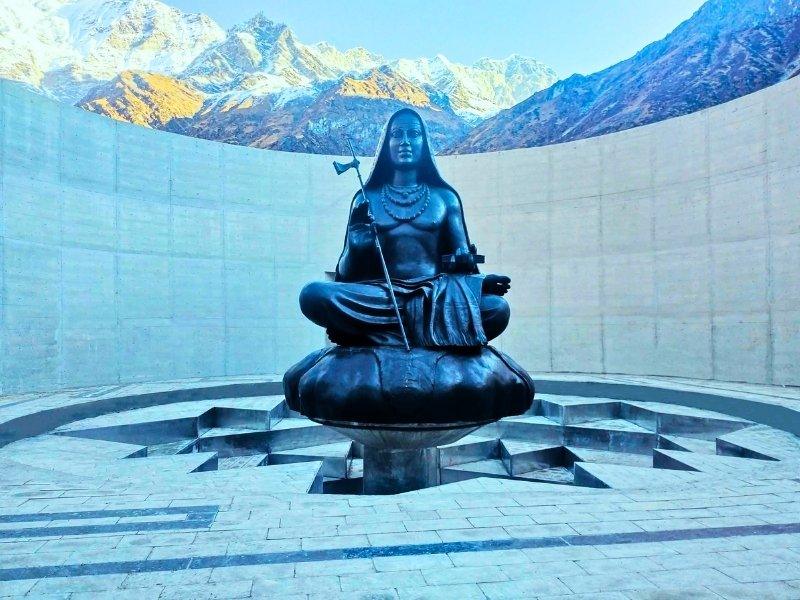
6. Meditate at Shankaracharya Samadhi
Behind the Kedarnath Temple lies the Samadhi (final resting place) of Adi Shankaracharya, the great philosopher and reformer who attained Mahasamadhi here at age 32. This quiet spot offers perfect conditions for meditation and contemplation.
- Visit during early morning or late afternoon for peaceful surroundings
- Spend time in silent meditation absorbing the spiritual vibrations
- Reflect on the philosophical teachings of Advaita Vedanta propagated by Shankaracharya
- Observe the simple memorial that honors this towering spiritual figure
7. Trek to Vasuki Tal
For adventure enthusiasts, the challenging 8-kilometer trek to Vasuki Tal (4,135 meters) presents breathtaking alpine scenery. This high-altitude glacial lake, named after the serpent king Vasuki, requires good fitness levels and acclimatization.
- Allocate a full day for this strenuous trek with an early morning start
- Hire local guides familiar with the terrain as the trail can be confusing
- Witness the stunning reflection of Chaukhamba peaks in the lake’s pristine waters
- Carry adequate warm clothing, water, and emergency supplies
- Only attempt during favorable weather conditions between June and September
8. Photography Opportunities
Kedarnath offers countless opportunities for capturing stunning Himalayan landscapes, spiritual moments, and architectural marvels. The interplay of light, mountains, and devotion creates magical photographic subjects.
- Capture sunrise views over the Kedarnath Temple with golden light illuminating the peaks
- Photograph the Mandakini River’s turquoise waters contrasting against rocky terrain
- Document the architectural details of the ancient stone temple construction
- Respect photography restrictions inside the main sanctum and during certain rituals
9. Interact with Sadhus and Spiritual Seekers
Kedarnath attracts numerous sadhus, ascetics, and spiritual seekers who spend the pilgrimage season in meditation and religious practices. Respectful interactions can provide insights into Hindu spirituality and ascetic traditions.
- Approach with humility and respect when seeking conversations or blessings
- Learn about their spiritual practices, philosophies, and pilgrimage experiences
- Offer small donations or prasad if sharing meals or extended conversations
- Understand that some ascetics prefer solitude and should not be disturbed
10. Visit During Special Occasions
Timing your visit to coincide with special religious occasions enhances the Kedarnath experience manifold. The temple celebrates several significant festivals with elaborate rituals and increased devotional fervor.
- Plan around temple opening day (late April or early May) for spectacular celebrations
- Visit during Shravan month (July to August) when millions of devotees undertake the pilgrimage
- Experience Maha Shivaratri celebrations if the temple has opened by then
- Witness temple closing ceremonies (late October or early November) marking the onset of winter
For more detailed activity guides and regional exploration ideas, check our extensive collection of Travel Guides covering Uttarakhand and Himalayan destinations.
Must-Try Food and Local Cuisine
The best food in Kedarnath reflects the simple yet nourishing cuisine of the Garhwal Himalayas, designed to provide energy for pilgrims undertaking arduous treks. Food options focus on vegetarian preparations respecting the sacred nature of this pilgrimage site.
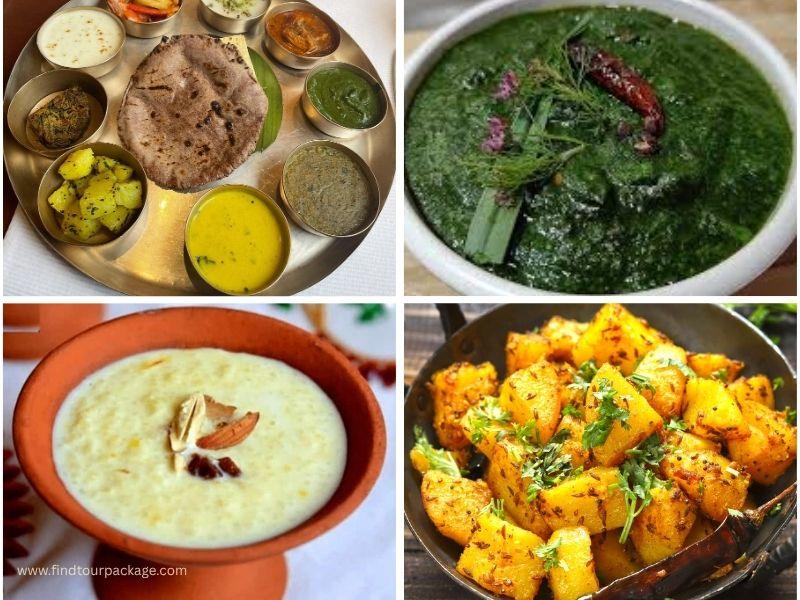
Most establishments serve traditional North Indian vegetarian fare with Garhwali specialties. The thali meals typically include rice, chapati, dal, seasonal vegetables, and buttermilk. Hot beverages like chai, coffee, and herbal teas provide warmth in the cold mountain climate. Street vendors sell snacks including pakoras, samosas, and Maggi noodles that have become ubiquitous at Himalayan destinations.
Popular Dishes and Where to Find Them
| Dish Name | Where to Try | Specialty |
|---|---|---|
| Garhwali Thali | GMVN Tourist Rest House, Local dhabas | Complete meal with local preparations |
| Aloo ke Gutke | Roadside eateries near temple | Spicy potato curry with local spices |
| Kandali ka Saag | Traditional restaurants in Kedarnath | Nutritious greens cooked with local herbs |
| Chainsoo | Bhojanalyas near Gaurikund | Black gram dal preparation unique to region |
| Hot Momos | Tea stalls throughout the route | Tibetan dumplings adapted to local taste |
| Masala Chai | Everywhere along the trek | Sweet spiced tea providing warmth and energy |
Local honey harvested from mountain forests makes an excellent purchase, known for its medicinal properties and distinctive flavor. Pilgrims should note that alcohol and non-vegetarian food are strictly prohibited in Kedarnath. Most eateries close by 8:00 PM, so plan dinner accordingly. Carry energy bars, dry fruits, and glucose for consumption during the trek as food availability becomes limited at higher altitudes.
The sensory experience of sipping hot chai while gazing at snow-capped peaks creates memories as lasting as the spiritual journey itself. Simple dal-chawal served in humble mountain dhabas tastes extraordinary after a strenuous trek. The aroma of freshly prepared parathas mingling with incense smoke from nearby temples defines the unique culinary atmosphere of Kedarnath.
Best Nearby Places to Visit
The must-visit attractions in Kedarnath region extend beyond the main temple, offering diverse experiences across the Garhwal Himalayas. These destinations combine naturally with a Kedarnath pilgrimage for a comprehensive Himalayan experience.
1. Gaurikund (16 km from Kedarnath)
Gaurikund serves as the base camp for Kedarnath trek and holds religious significance as the spot where Goddess Parvati meditated to win Lord Shiva. The natural hot springs here attract pilgrims for ritual bathing before beginning their ascent. The Gauri Temple dedicated to Goddess Parvati offers prayers before starting the journey. Plan to spend a night here for acclimatization and early morning trek departure.
2. Sonprayag (5 km from Gaurikund)
This scenic confluence point where the Basuki and Mandakini rivers meet offers stunning natural beauty. The drive from Sonprayag to Gaurikund follows the roaring Mandakini River through dramatic gorges. Small eateries serve hot meals and tea for travelers. The area provides excellent photography opportunities with rushing waters and mountain backdrops.
3. Triyuginarayan Temple (33 km from Sonprayag)
According to Hindu mythology, Lord Shiva and Goddess Parvati were married at this ancient temple. The eternal flame (akhand dhuni) has reportedly burned continuously since the divine wedding. The temple’s architecture showcases traditional Garhwali style with stone construction. Visit during the off-season when Kedarnath remains closed for a peaceful spiritual experience.
4. Chopta and Tungnath (70 km from Kedarnath via Rudraprayag)
Chopta, known as the “Mini Switzerland of India,” offers spectacular meadows and the trek to Tungnath Temple, the highest Shiva temple at 3,680 meters. The relatively easy 3.5-kilometer trek attracts families and casual trekkers. Continue to Chandrashila Peak for 360-degree Himalayan views. This region remains accessible even when Kedarnath closes during winter.
5. Badrinath (220 km from Kedarnath)
Complete your Char Dham pilgrimage by visiting Badrinath, dedicated to Lord Vishnu. The journey takes approximately 8 to 10 hours by road passing through Rudraprayag, Joshimath, and scenic mountain roads. Plan at least 2 to 3 days for this extension. The contrasting Vaishnava traditions at Badrinath complement the Shaiva worship at Kedarnath.
6. Rudraprayag (75 km from Kedarnath)
This confluence town where Alaknanda and Mandakini rivers meet serves as a major stopover for Char Dham pilgrims. Visit the Rudranath Temple and enjoy riverside walks along the ghats. The town offers better accommodation and dining options compared to smaller mountain settlements. Evening aarti at the confluence creates a serene spiritual atmosphere.
For detailed route information, transportation options, and journey planning, explore our comprehensive How to Reach Guides covering Uttarakhand pilgrimage destinations.
Adventure and Cultural Experiences
Kedarnath offers unique opportunities to combine physical adventure with profound cultural immersion, creating transformative travel experiences.
Adventure Activities
The rugged Himalayan terrain surrounding Kedarnath presents exceptional opportunities for adventure enthusiasts seeking challenging experiences.
- Trekking to high-altitude lakes: Explore Vasuki Tal, Gandhi Sarovar, and other glacial lakes requiring good fitness and acclimatization
- Mountain photography expeditions: Capture sunrise over Kedarnath peaks, dramatic cloud formations, and the interplay of light on snow
- Bird watching: Spot Himalayan species including Himalayan Monal, Snow Partridge, and various eagles during early morning hours
- Camping near Kedarnath: Limited camping opportunities exist with proper permissions for those seeking overnight mountain experiences
- Winter trekking: Extremely experienced trekkers attempt the closed-season trek with proper equipment and local guides (not recommended for regular tourists)
- Helicopter rides: Aerial views of the Kedarnath valley and surrounding peaks during the 5-minute helicopter journey from Phata or Sersi
Cultural Experiences
The cultural dimensions of Kedarnath provide deep insights into Hindu spirituality, temple traditions, and mountain community life.
- Participate in temple rituals: Observe or join the abhishekam (ritual bathing of deity) performed by hereditary priests following ancient traditions
- Learn about temple legends: Understand the Mahabharata connections, Pandava stories, and mythological significance from local priests and guides
- Witness traditional music: Listen to bhajans and devotional songs performed by pilgrims creating powerful collective spiritual energy
- Study temple architecture: Examine the remarkable stone construction techniques that have preserved the temple for over 1,000 years
- Understand priest traditions: Learn about the hereditary Rawal priests from Karnataka who manage temple worship throughout the operational season
- Experience pilgrimage culture: Observe the diversity of pilgrims from across India, each bringing unique regional devotional practices
The optimal months for adventure activities are May to June and September to October when weather conditions remain stable and trails are accessible. Cultural experiences remain consistent throughout the operational season, though festivals and special occasions amplify the intensity of religious activities.
Shopping and Local Handicrafts
Shopping in Kedarnath focuses primarily on religious items, essential supplies, and local products rather than extensive handicraft markets found in larger towns.
The small shops lining the path to Kedarnath Temple sell rudraksha malas, religious books, deity idols, and ceremonial items. Local honey harvested from mountain forests offers excellent quality and medicinal properties. Herbal products including mountain-grown herbs and Ayurvedic preparations attract health-conscious buyers. Warm clothing including shawls, gloves, and woolen caps are available for pilgrims who arrive unprepared for cold weather.
Shopping Guide for Kedarnath
| Market/Shop | What to Buy | Price Range | Local Tip |
|---|---|---|---|
| Temple area shops | Rudraksha malas, deity photos, religious books | ₹50 to ₹2,000 | Compare prices at multiple shops before purchasing |
| Local vendors | Mountain honey, herbal products | ₹200 to ₹800 per bottle | Ensure proper sealing and authenticity certificates |
| Clothing stalls | Woolen shawls, gloves, caps | ₹100 to ₹1,500 | Bargain expected, start at 50% of quoted price |
| Prasad shops | Temple prasad, dry fruits, local sweets | ₹50 to ₹500 | Purchase from temple-authorized shops for authenticity |
| Gaurikund market | Trekking essentials, emergency supplies | ₹100 to ₹2,000 | Stock up on necessities before starting trek |
For more extensive handicraft shopping, visit Rishikesh or Haridwar which offer Garhwali wood carvings, traditional jewelry, paintings, and textiles. Rudraprayag also features better shopping options for regional handicrafts and souvenirs. Most shops in Kedarnath accept only cash, so carry sufficient currency in small denominations. Prices generally remain fixed with limited scope for bargaining on religious items.
Purchase only necessary items as you’ll need to carry everything back down the mountain. Avoid buying plastic bottles and disposable items; instead, carry reusable water bottles and containers. Supporting local vendors directly helps mountain communities dependent on seasonal pilgrimage income.
Travel Tips for Kedarnath
Successfully navigating the Kedarnath travel guide requires preparation, flexibility, and respect for both the challenging environment and sacred nature of this destination.
Do’s and Don’ts for Kedarnath Pilgrimage
Do’s:
- Register for the yatra at official registration counters with valid ID proof
- Start your trek early morning to complete the journey in daylight hours
- Carry sufficient warm clothing including jackets, gloves, and caps even during summer
- Stay hydrated throughout the trek with regular water intake
- Respect temple protocols including dress codes covering shoulders and knees
- Book helicopter services well in advance during peak season for confirmed travel
- Carry basic first aid including altitude sickness medication and pain relievers
- Hire porters or ponies if you have physical limitations or health concerns
- Download offline maps and keep emergency contact numbers accessible
Don’ts:
- Don’t attempt the trek if you have serious health conditions without medical clearance
- Don’t litter anywhere along the trek or near the temple premises
- Don’t consume alcohol or non-vegetarian food in Kedarnath
- Don’t venture off marked trails or attempt risky shortcuts
- Don’t carry excessive luggage; travel light with only essential items
- Don’t ignore signs of altitude sickness including headache, nausea, and breathlessness
- Don’t touch or disturb any wildlife encountered during the trek
- Don’t create unnecessary noise or disturbance near meditation areas
- Don’t attempt photography inside the main sanctum during worship
Essential Packing List:
- Warm layered clothing, waterproof jacket, trekking shoes with good grip
- Personal medications, altitude sickness pills, glucose, and energy bars
- Valid photo ID, registration documents, and emergency contacts
- Flashlight or headlamp with extra batteries for early morning activities
- Reusable water bottle, sunscreen, sunglasses, and moisturizer
- Basic toiletries in small quantities and biodegradable products
- Power bank for mobile devices as electricity can be unreliable
For insights into current travel patterns and season-specific considerations, visit our Travel Trends section covering Himalayan destinations.
Sample Itinerary (5 Days)
This practical five-day itinerary covers the complete Kedarnath pilgrimage experience with adequate acclimatization and exploration time.
Day 1: Arrival at Haridwar/Rishikesh and Journey to Guptkashi Begin your journey from Delhi or nearby cities arriving at Haridwar or Rishikesh by morning. Drive approximately 7 to 8 hours covering 200 kilometers to reach Guptkashi, stopping at scenic viewpoints and Devprayag confluence. Check into your hotel and rest for the evening. Attend the evening aarti at a local temple and prepare for the next day’s trek. Have an early dinner and sleep well as tomorrow requires an early start.
Day 2: Guptkashi to Gaurikund, Trek to Kedarnath Depart early morning by 5:00 AM driving to Sonprayag and then Gaurikund (approximately 30 kilometers in 1.5 hours). Complete registration formalities and begin the 16-kilometer trek by 7:00 AM. Take regular breaks at Rambara and Linchauli, reaching Kedarnath by afternoon. Check into accommodation and rest for acclimatization. Attend the evening aarti at Kedarnath Temple around 6:00 PM. Have light dinner and retire early for morning darshan.
Day 3: Kedarnath Temple Visit and Local Exploration Wake up early for morning aarti at 4:00 AM and wait for temple darshan (2 to 4 hours waiting time expected). After completing darshan and prayers, return to accommodation for breakfast. Trek to Gandhi Sarovar (Chorabari Tal) if weather permits, taking 2 to 3 hours for the round trip. Visit Bhairav Temple for panoramic views and completing the pilgrimage rituals. Spend the evening in meditation or quiet reflection at Shankaracharya Samadhi.
Day 4: Kedarnath to Gaurikund, Night at Guptkashi Begin descent early morning around 6:00 AM completing the 16-kilometer trek to Gaurikund by noon. The downhill journey typically takes 4 to 6 hours with breaks. Bathe in the hot springs at Gaurikund and visit Gauri Temple. Drive back to Guptkashi reaching by evening. Rest at your hotel recovering from two days of trekking. Explore local markets and enjoy a relaxed dinner.
Day 5: Guptkashi to Haridwar/Rishikesh, Departure After breakfast, begin the return journey to Haridwar or Rishikesh (approximately 7 to 8 hours). Stop at Rudraprayag for lunch and quick sightseeing at the confluence. Reach Haridwar or Rishikesh by evening with time for quick shopping or attending Ganga aarti if flight/train timing permits. Depart for onward journey carrying memories of this transformative pilgrimage.
This itinerary can be extended to include nearby destinations like Badrinath, Chopta, or Tungnath depending on available time and interests.
Where to Stay
Accommodation options in Kedarnath range from basic dormitories to comfortable guesthouses, all operating only during the pilgrimage season from May to October.
Budget Accommodations: Dharmashalas and ashrams provide dormitory-style lodging with basic facilities at minimal costs or free of charge. These establishments cater primarily to pilgrims seeking simple, no-frills accommodation. Shared bathrooms, common dining areas, and limited electricity characterize these budget stays. Dormitory beds cost between ₹200 to ₹500 per person. Advance booking is not typically available; rooms are allotted on a first-come, first-served basis.
Mid-Range Options: Government-run GMVN (Garhwal Mandal Vikas Nigam) tourist rest houses and private guesthouses offer better facilities including private rooms and attached bathrooms. Hot water availability remains limited to specific hours. These properties provide meals on request and have generators for backup electricity. Rooms range from ₹1,500 to ₹3,000 per night. Advance booking through official websites is strongly recommended during peak season.
Tent Accommodations: Several operators set up seasonal tented camps near Kedarnath offering slightly better comfort than basic accommodations. These tents include basic bedding, limited furniture, and sometimes attached washrooms. Prices range from ₹2,000 to ₹4,000 per night depending on facilities. These fill quickly during peak season, requiring advance reservations.
Accommodation Options and Pricing
| Hotel Type | Average Price/Night | Best Areas to Stay |
|---|---|---|
| Dharmashalas/Ashrams | ₹200 to ₹500 (dormitory) | Near temple area, managed by various trusts |
| GMVN Rest Houses | ₹1,500 to ₹2,500 | Strategic locations with better facilities |
| Private Guesthouses | ₹1,500 to ₹3,000 | Scattered throughout Kedarnath settlement |
| Seasonal Tented Camps | ₹2,000 to ₹4,000 | Designated camping zones near temple |
Gaurikund Stays: Many pilgrims prefer staying at Gaurikund before beginning the trek, offering more comfortable accommodation options. Gaurikund features better hotels, guesthouses, and even some resorts with modern amenities. This strategy allows for an early morning trek start with good rest the previous night.
Booking Tips: Reserve accommodations at least 2 to 3 months in advance during peak season (May to June and September to October). Carry booking confirmations in printed format as internet connectivity remains unreliable. Expect basic facilities even in paid accommodations; this is not a destination for luxury stays. Pack sleeping bags or warm blankets as nights can be extremely cold even during summer. Most accommodations close by late October when the temple closes for winter.
Safety considerations include choosing accommodations near the main settlement rather than isolated locations, keeping valuables secured, and maintaining regular contact with family during your stay.
Conclusion
The things to do in Kedarnath encompass far more than a simple temple visit, offering a complete immersive experience that combines spiritual awakening, physical challenge, and natural beauty. From attending the powerful morning aarti that reverberates through mountain valleys to trekking through pristine Himalayan landscapes, every moment in Kedarnath carries transformative potential. The ancient temple standing resilient against nature’s fury symbolizes unwavering faith, while the surrounding peaks remind visitors of their humble place in the grand cosmic design.
This sacred destination welcomes seekers of all kinds: devoted pilgrims fulfilling religious obligations, adventure enthusiasts conquering challenging treks, photographers capturing Himalayan grandeur, and spiritual aspirants seeking deeper meaning. The 16-kilometer journey from Gaurikund to Kedarnath tests physical limits while offering ample time for introspection and mental preparation for the divine darshan awaiting at the destination. Each step on this ancient pilgrimage route connects modern travelers with countless devotees who have walked this path for centuries.
Planning your Kedarnath pilgrimage requires careful consideration of weather conditions, physical fitness, altitude acclimatization, and spiritual readiness. Book accommodations well in advance, pack appropriately for cold mountain weather, and maintain flexibility with your schedule as Himalayan weather can be unpredictable. Most importantly, approach this journey with respect for the sacred environment, local customs, and fellow pilgrims sharing this profound experience.
For comprehensive planning resources covering activities, attractions, and insider tips for destinations across India and beyond, explore our extensive collection of Things to Do Guides designed to help travelers create meaningful, well-organized journeys.
For official information about the Kedarnath pilgrimage including registration procedures, helicopter booking, accommodation options, and current travel advisories, visit the Official Uttarakhand Tourism Website.
The Uttarakhand Tourism Development Board provides updated information about temple opening and closing dates, weather conditions, route status, and safety guidelines for all Char Dham destinations. Register your yatra through official channels to ensure proper documentation and access to emergency services during your pilgrimage.
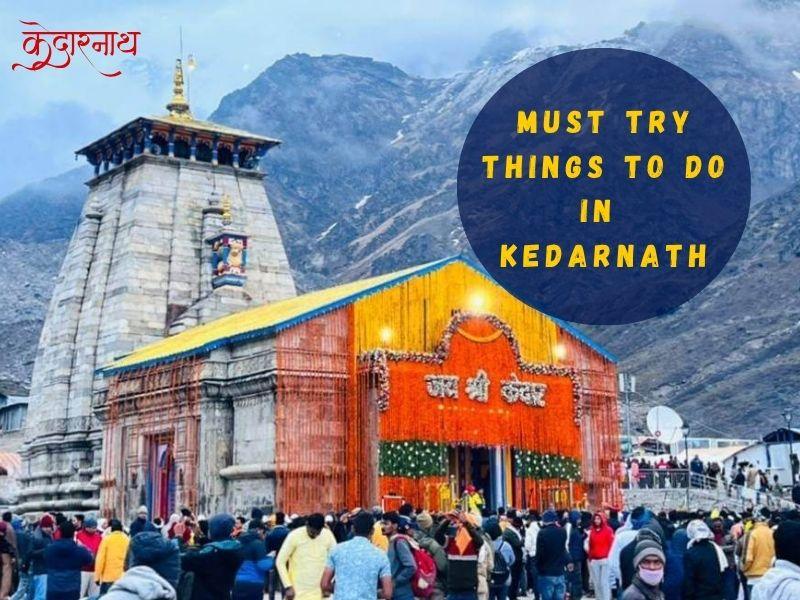
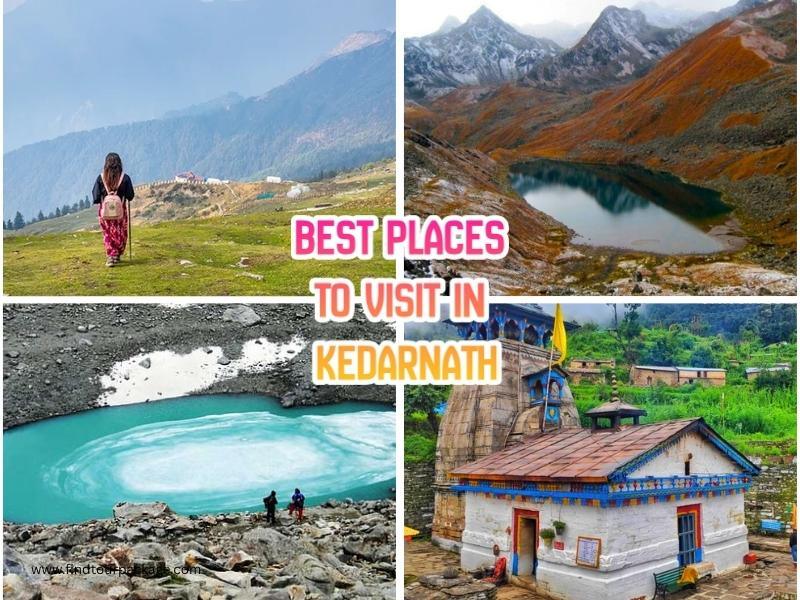
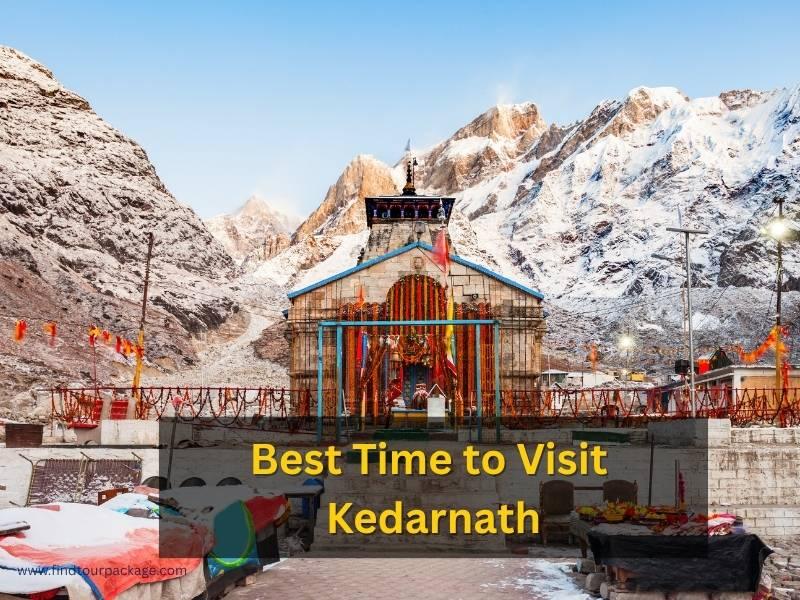



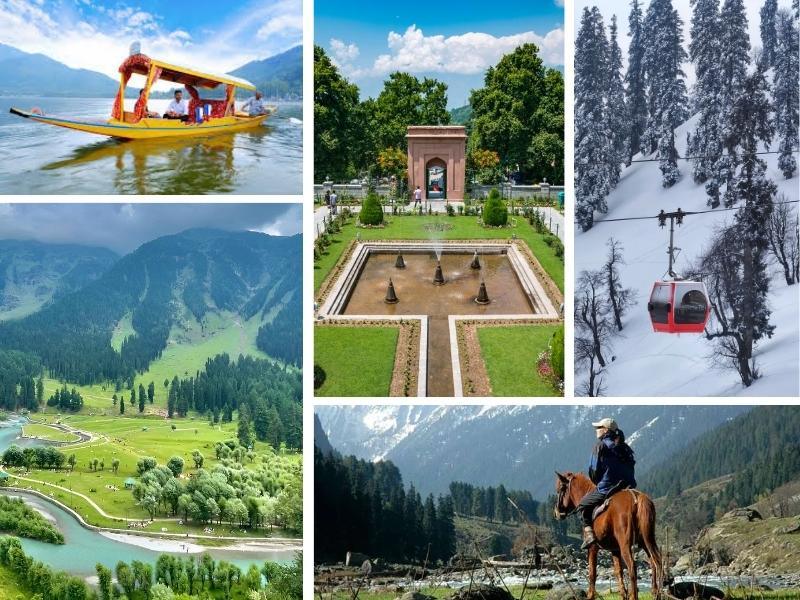
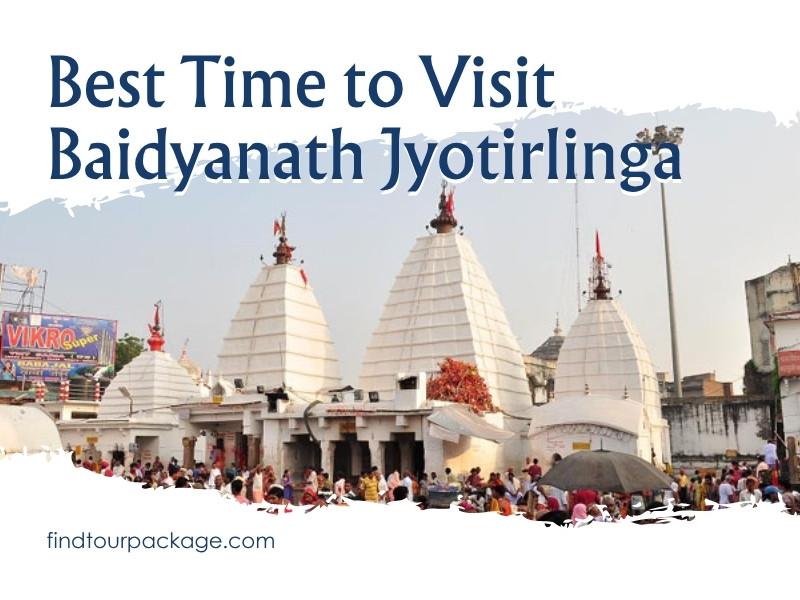





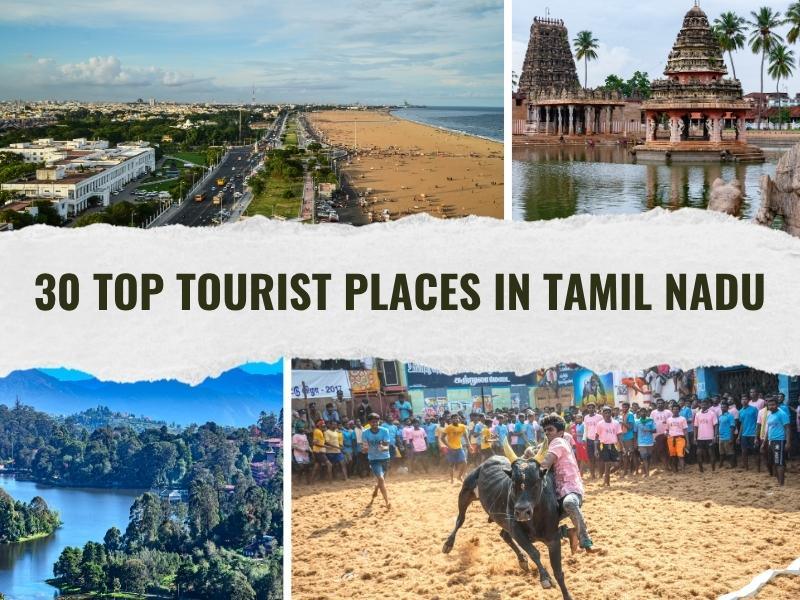


Leave a Comment